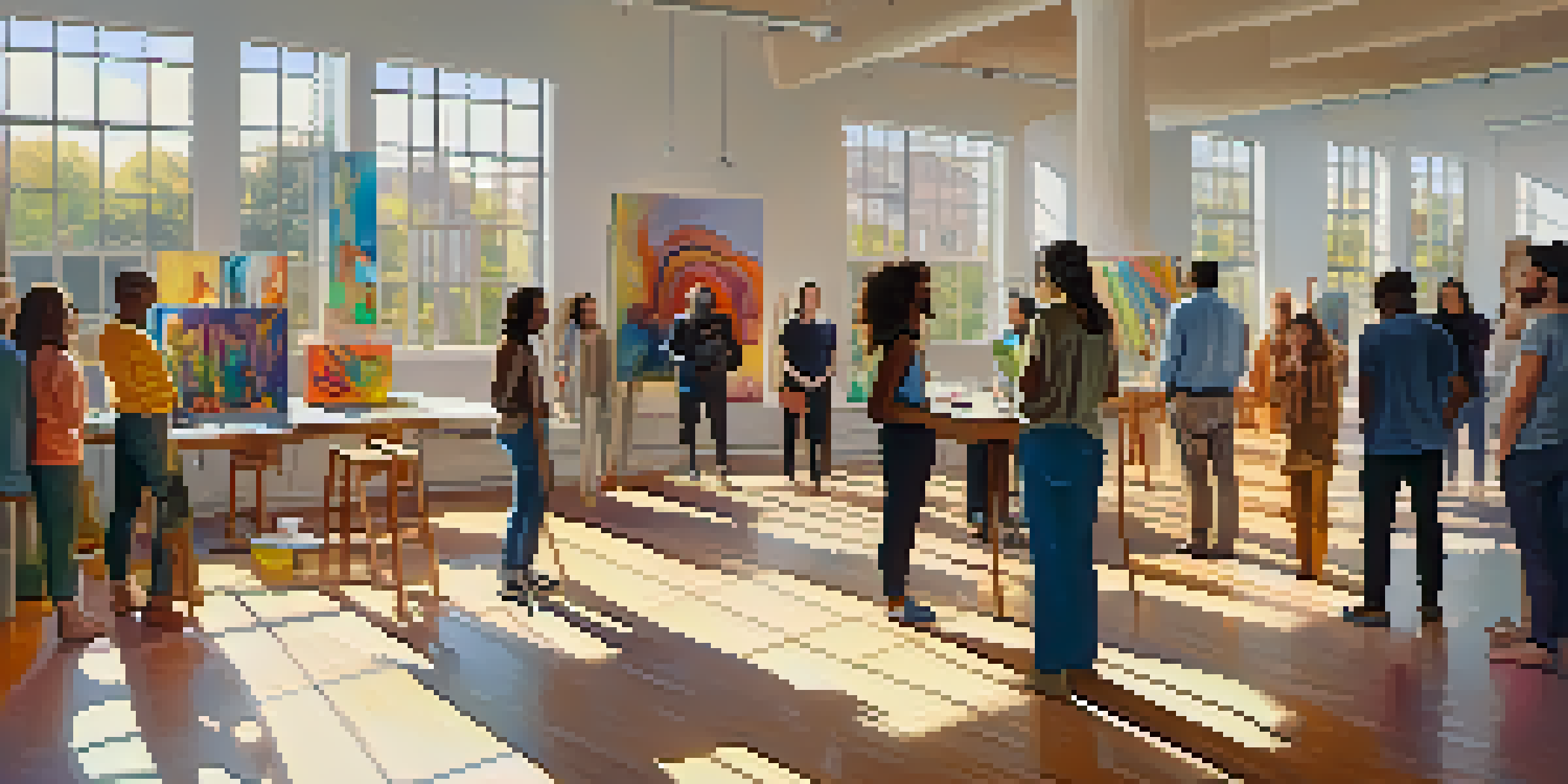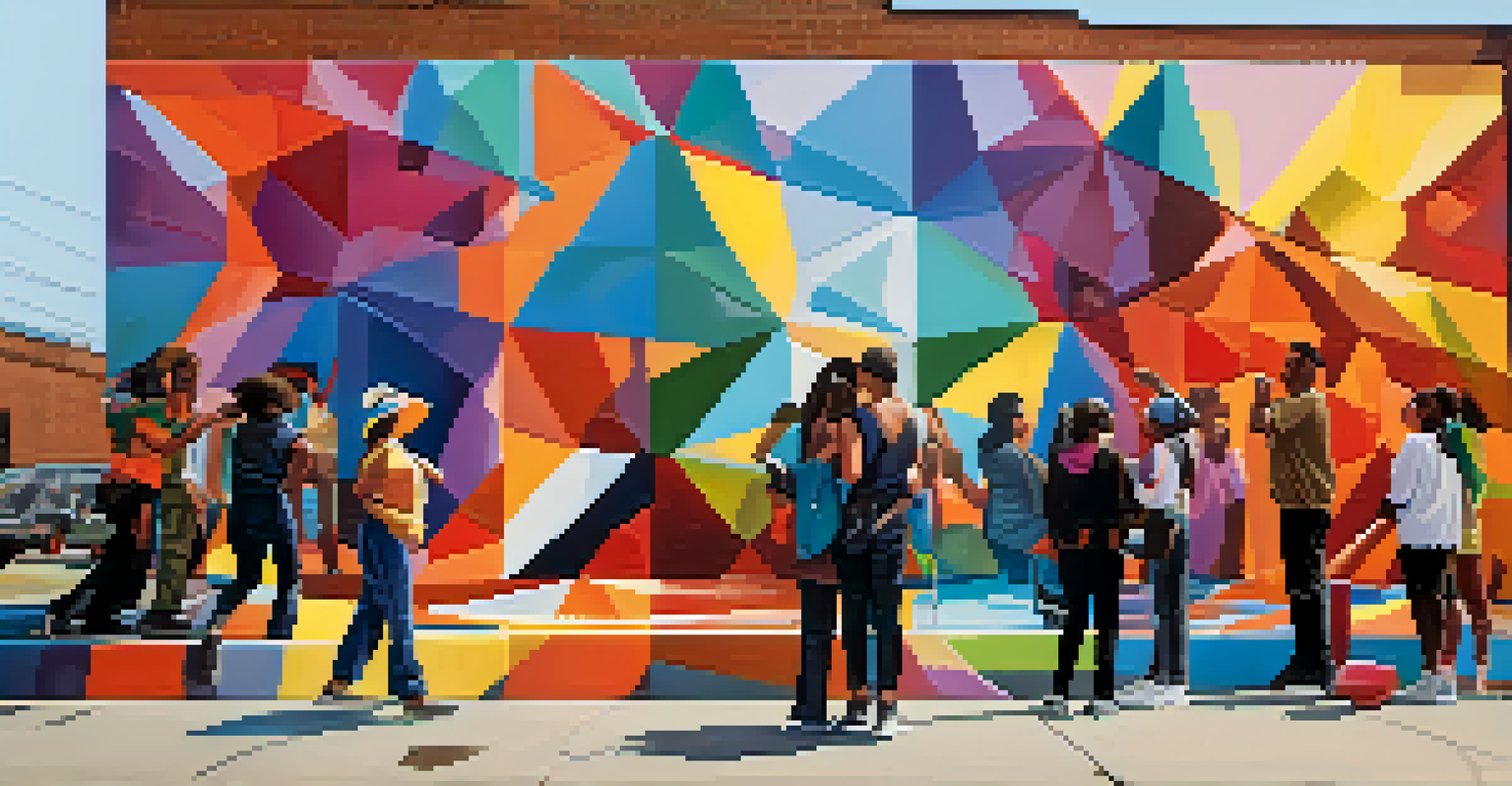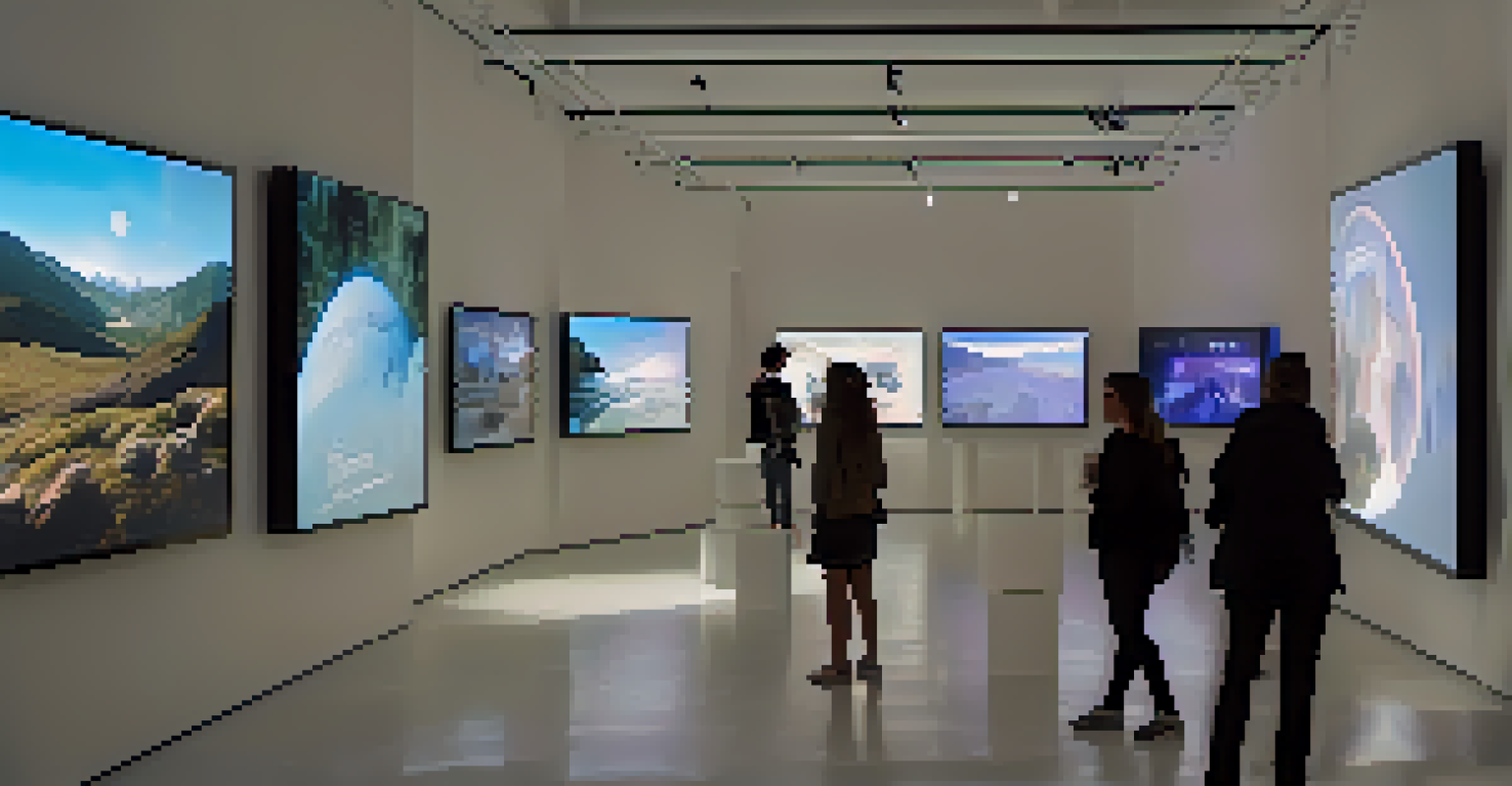Art Collectives and Their Role in Shaping Modern Art Trends

Understanding Art Collectives and Their Purpose
Art collectives are groups of artists who collaborate creatively, often sharing resources and ideas. They bring together diverse talents, which can lead to innovative projects that one individual might not achieve alone. By pooling their expertise, these collectives create a supportive environment that nurtures artistic expression and experimentation.
Art is not a thing, it is a way.
These groups can vary widely in size and focus, from local community collectives to internationally recognized movements. The unifying factor is a shared vision or goal that often challenges traditional art norms. This collective approach not only amplifies individual voices but also fosters a sense of belonging within the art community.
Through exhibitions, performances, and public projects, art collectives engage with audiences in unique ways. They often address social issues, promote cultural dialogue, and encourage participation, making art more accessible and relevant to everyday life.
Historical Context: The Rise of Art Collectives
Art collectives have roots tracing back to the avant-garde movements of the late 19th and early 20th centuries. Groups like the Futurists and Dadaists emerged as responses to the changing world, utilizing collaboration to push boundaries and question artistic conventions. This tradition continued through the mid-20th century, with collectives like the Situationist International shaping political and cultural landscapes.

The 1960s and 70s saw a surge in collective art-making, with movements like Fluxus and Feminist Art asserting the importance of community in art. These groups not only created art but also critiqued the art world itself, advocating for inclusivity and representation. Their legacy is a testament to how collective action can lead to meaningful change in the art landscape.
Art Collectives Foster Collaboration
Art collectives bring together diverse artists, creating innovative projects and a supportive environment for artistic expression.
In recent years, the rise of digital platforms has further facilitated the formation of art collectives. Artists from different backgrounds and geographies can connect, collaborate, and exhibit their work online, transcending traditional barriers and expanding the definition of what an art collective can be.
Influence on Modern Art Trends and Movements
Art collectives play a crucial role in shaping modern art trends by fostering innovation and experimentation. They often serve as incubators for new ideas, pushing artists to explore uncharted territories. This spirit of collaboration can lead to groundbreaking movements, such as street art and socially engaged art, which reflect contemporary issues and narratives.
The best way to predict the future is to create it.
Collectives often challenge the status quo by questioning traditional hierarchies in the art world. By prioritizing community and collaboration over individual fame, they create alternative systems that promote inclusivity and accessibility. This shift not only influences artistic practices but also impacts how art is perceived and valued in society.
The impact of art collectives can be seen in the growing popularity of participatory art, where audiences are invited to engage with the creative process. This trend emphasizes the importance of collaboration between artists and viewers, blurring the lines between creator and consumer, and fostering a deeper connection to the artwork.
Case Study: The Guerrilla Girls and Feminist Art
The Guerrilla Girls, a collective of feminist artists, have made significant contributions to modern art by highlighting sexism and racism in the art world. Formed in the 1980s, they use bold visuals and humor to provoke thought and inspire action. Their iconic posters and public appearances challenge institutions and demand equal representation for women and artists of color.
By utilizing anonymity and a collective identity, the Guerrilla Girls have shown the power of collaboration in advocating for social justice. Their approach not only amplifies individual voices but also emphasizes the importance of collective action in creating lasting change. This strategy has inspired countless artists to address similar issues in their work.
Digital Platforms Expand Reach
The digital age enables art collectives to connect globally, facilitating collaboration and broadening access to diverse artistic voices.
The ongoing influence of the Guerrilla Girls is evident in contemporary feminist movements within the art world. Their legacy encourages new generations of artists to engage with social issues, proving that art collectives can be powerful agents of change.
Technology's Role in Modern Art Collectives
The digital age has revolutionized how art collectives operate, providing new platforms for collaboration and exhibition. Social media, online galleries, and virtual events allow artists to connect with global audiences, breaking geographical barriers. This accessibility fosters a diverse range of voices and perspectives, enriching the contemporary art landscape.
Digital tools enable collectives to experiment with multimedia art forms, combining traditional practices with new technologies. From virtual reality installations to interactive online exhibitions, technology expands the possibilities of artistic expression. This evolution encourages artists to think outside the box and engage with their audiences in innovative ways.
Moreover, the rise of crowdfunding platforms has allowed art collectives to finance their projects and initiatives independently. This financial autonomy empowers artists to pursue their visions without relying solely on traditional funding sources, fostering a sense of ownership and creative freedom.
Challenges Faced by Art Collectives Today
While art collectives have the potential to drive significant change, they also face challenges in a competitive art market. Limited funding, lack of resources, and the pressure to conform to mainstream trends can hinder their creative pursuits. Additionally, navigating the complexities of group dynamics can pose difficulties in decision-making and maintaining a unified vision.
Another challenge is the risk of commodification; as collectives gain recognition, they may be tempted to prioritize commercial success over artistic integrity. This tension can lead to conflicts within the group, as members grapple with differing priorities and artistic philosophies. Balancing the pursuit of recognition with staying true to their mission is a constant struggle for many collectives.
Challenges in the Art Collective Scene
Despite their potential for change, art collectives face challenges like limited funding and the risk of commodification affecting their integrity.
Despite these challenges, many art collectives continue to thrive by adapting and evolving. By prioritizing collaboration and open communication, they can navigate obstacles and maintain their commitment to social change and innovative artistic practices.
The Future of Art Collectives in a Globalized World
As the art world becomes increasingly globalized, the role of art collectives is more vital than ever. They provide a platform for underrepresented voices, allowing artists from diverse backgrounds to come together and share their experiences. This collective approach fosters a richer artistic dialogue, contributing to a more inclusive cultural landscape.
The future of art collectives will likely see further integration of technology, enabling collaboration across borders. Virtual exhibitions and online workshops can connect artists from different countries, creating a global network of creativity and support. This interconnectedness can lead to innovative projects that reflect a wide range of perspectives and experiences.

Ultimately, art collectives will continue to shape modern art trends by advocating for social change and fostering collaboration. As they adapt to the evolving art world, their commitment to community, experimentation, and inclusivity will remain at the core of their mission, ensuring their relevance for years to come.